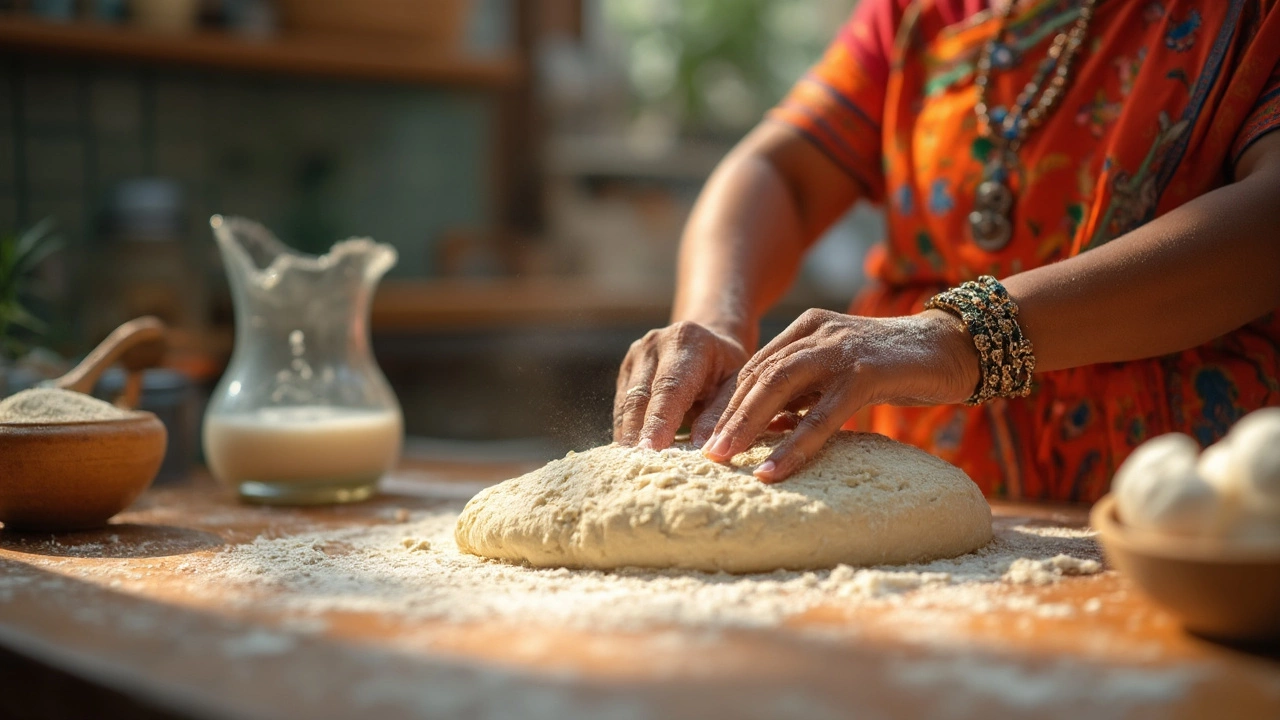Roti Dough: How to Make Soft, Fluffy Indian Flatbreads
When working with roti dough, the simple wheat flour mixture that becomes chapatis, phulkas or tandoori roti after cooking. Also known as chapati batter, it relies on hydration, resting time, and sometimes a touch of fat or leavening to achieve the right texture. Adding oil, a neutral fat such as vegetable or mustard oil at the right stage softens the gluten network and helps the dough stay pliable. Likewise, a pinch of baking soda can react with any acidity in the dough, creating tiny air bubbles that make the roti lighter and puffier. Some cooks prefer baking powder for a more controlled lift, especially when the dough is rolled thin. The ultimate goal is a soft roti, a flatbread that stays tender even after cooling, often described as fluffy in texture. Mastering roti dough means understanding how these ingredients interact and how technique shapes the final bite.
Key Factors for Perfect Roti
First, the flour‑to‑water ratio sets the stage; too much water makes a sticky ball, too little leaves a crumbly mix. A good rule of thumb is about 2 parts water to 3 parts whole‑wheat flour, then adjust by feel. Next, the resting period lets the gluten relax, usually 15‑30 minutes covered with a damp cloth. During this time, the dough absorbs moisture, and any added oil spreads evenly, making rolling easier. When you roll the dough, aim for a uniform thickness—about 2 mm—so heat can travel quickly and the surface stays moist enough to puff. Cooking on a hot, dry tawa or skillet creates steam inside the roti, forcing it to balloon; this is why a well‑heated pan is essential. If you notice the roti staying flat, check the heat level, the dough's moisture, or whether you skipped the resting step. Adding a pinch of baking soda (about ¼ tsp per kilogram of flour) can give that extra lift, but use it sparingly, as too much makes the roti taste soapy.
Beyond the basics, regional twists add flavor. In North India, many families melt a little ghee into the dough for richer taste, while South Indian cooks sometimes sprinkle a tiny amount of turmeric for color and subtle earthiness. For a crisp edge, brush the cooked roti with melted butter right after it lifts off the pan; this also seals in moisture, keeping the bread soft for hours. If you prefer a slightly tangy bite, a spoonful of plain yogurt in the dough behaves like a natural leavening agent, working hand‑in‑hand with baking soda. Remember to keep the dough covered; exposure to air dries the surface, leading to hard spots that resist puffing. With these tips, you’ll be able to troubleshoot common issues—like a roti that won’t puff, that cracks, or that turns hard fast—by adjusting oil, leavening, heat, or resting time. Below you’ll find a curated set of articles that dive deeper into each of these aspects, from why roti sometimes stays flat to how baking soda changes its texture, giving you actionable steps to nail perfect rotis every time.

Why Does Roti Get Hard After Cooking? Simple Fixes That Work
Roti can go from soft to tough pretty quickly, and it's not just luck—technique matters. This article digs into why rotis often turn hard after cooking and how to keep them soft every time. From dough texture and resting times to rolling skills and cooking tricks, you'll find clear reasons and down-to-earth solutions. Common myths will get debunked with actual practical advice. If you want your rotis to be soft and fluffy, this is a must-read.